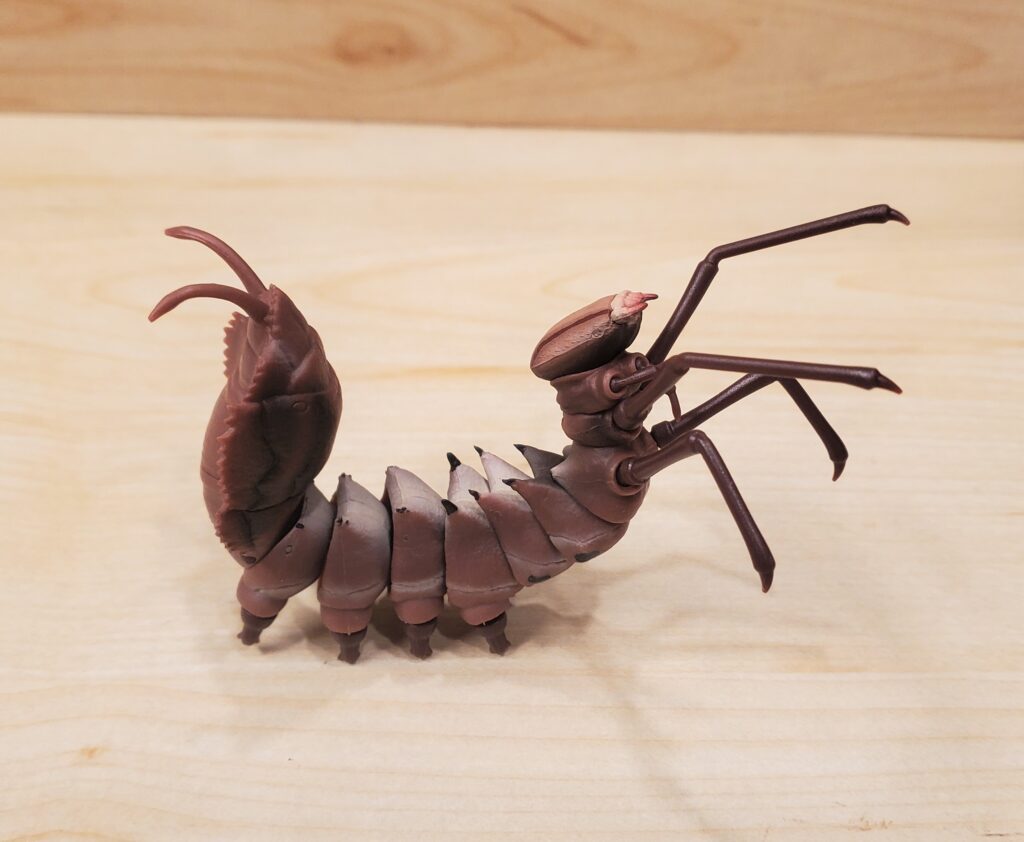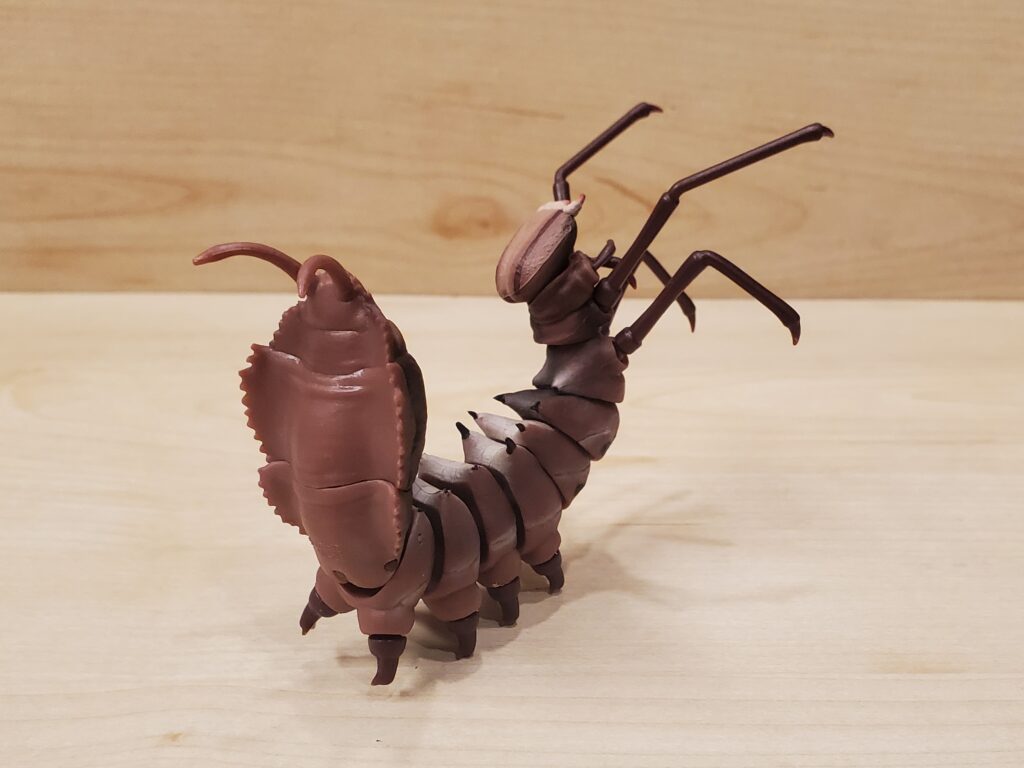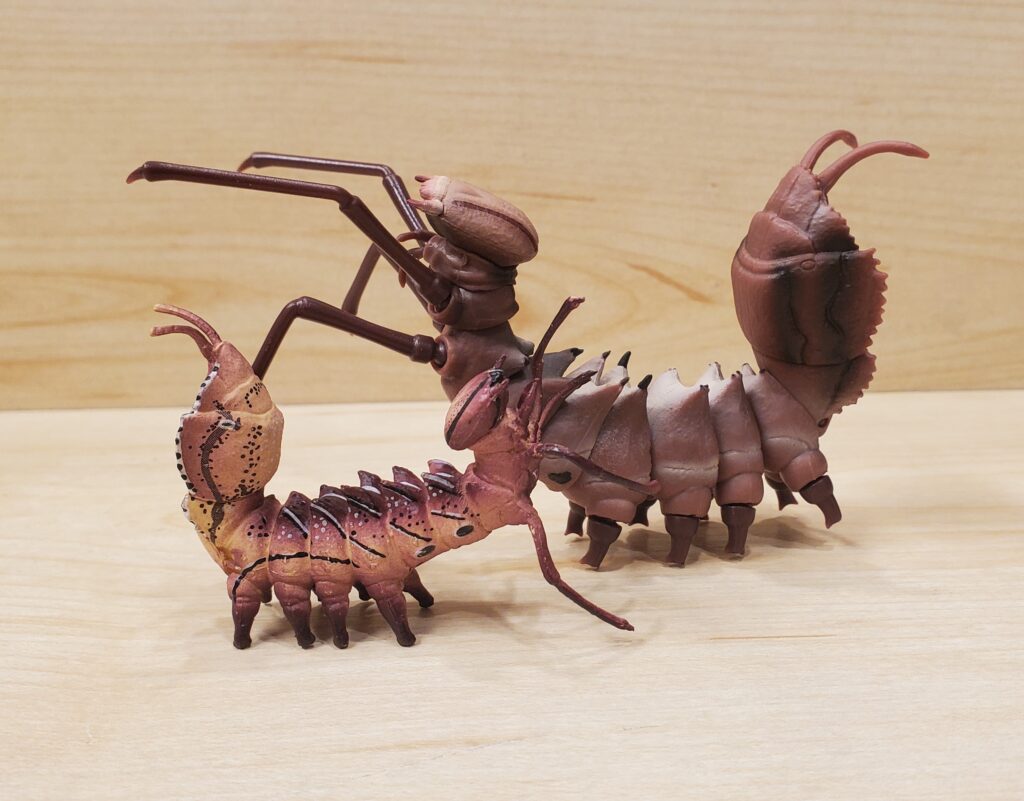For the most part, adult moths in the family Notodontidae (commonly referred to as the ‘prominents’) are relatively drab moths, at least in the Northern Hemisphere. There are exceptions, of course, but in general they are fairly non-descript (to the casual observer) brown and grey moths typical of those seen at a porch light on a warm, humid summer’s eve. The larvae, on the other hand, they tend to come with all the bells-and-whistles, especially those in the subfamiles Cerurinae and Notodontinae. Today we are looking at one such flashy caterpillar, specifically that of the lobster moth (Stauropus fagi) that was produced by Bandai in late 2022 for their Diversity of Life on Earth line.

The lobster moth occurs throughout much of the Palearctic, although it is absent from northern Africa, parts of Siberia, and the northern regions of the British Isles. Larvae feed on the leaves of a variety of plants, including maple, birch, hornbeams, chestnut, dogwood, hazel, apple, plum, cherry, walnut, oak, willow, mountain-ash, linden, and, as the species epithet suggests, beech (Fagus is the Latin genus for beech).

Adults, as hinted earlier, are fairly drab moths, but the larvae are quite eccentric. The larvae possess a large head, elongated thoracic legs, protuberances along its body, and a swollen anal segment that has claspers modified into elongated appendages. When a potential predator approaches, the larva arches its body backwards and flails its forelegs and caudal appendages. These unusual morphologies also provide some camouflage among branches and twigs of the host plant.

Like other Diversity figures, some assembly is required. The figure, when stretched out, has a body length of approximately 11.5 cm for a scale of 1.6:1. It’s painted brown with various pale and darker highlights. The forelegs are a base brown with no detail. The dorsal protuberances are painted black. The final product is articulated and can be displayed in a relaxed or defensive posture.

Surprisingly (or not), this is not the only figure of a lobster moth caterpillar. Kaiyodo produced one in 2014 for the Capsule Q Museum line (see next pic). To my knowledge, there are no figures of this species as an adult.

And here it is alongside the giant Sun Wai puss moth (Cerura vinula) caterpillar, also a member of the family Notodontidae (I should probably review the puss moth caterpillar too at some point):

For collectors of interesting taxa, this model comes recommended. However, the Kaiyodo figure is smaller, doesn’t require assembly, and might be less expensive. In this one blogpost, I have showed images of the only three notodontid figures in existence (well, to the best of my knowledge); it’s not a family of insects that gets much representation in our hobby!
Disclaimer: links to Ebay and Amazon on the AnimalToyBlog are affiliate links, so we make a small commission if you use them. Thanks for supporting us!



